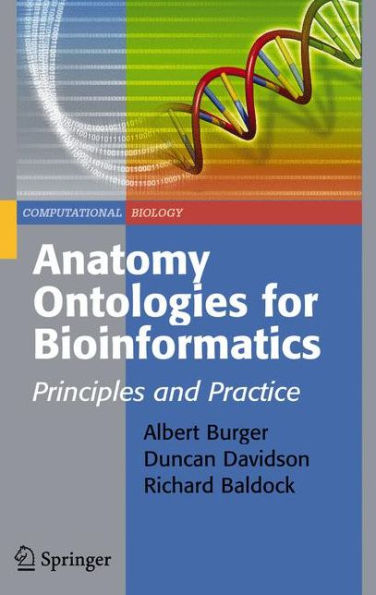Anatomy Ontologies for Bioinformatics: Principles and Practice
This book is about the ontology of anatomy. With respect to the individual fields of ontology and anatomy, the ontology of anatomy has aspects of both an old and a new topic area. A new aspect for anatomy is that the ontology of anatomy brings medicine together with molecular biology and its related subjects. Similarly, for the field of ontology, biomedical informatics has seen an explosion in the use of onto- gies and ontology-like resources. There has been a particular interest in ontologies for human anatomy and also the anatomy of other types of organism. This explosion has pushed the field of ontology into the limelight, with new practical applications of ontology being developed and new formalisms to accommodate the things that biologists need to say. The ontology of anatomy covers a broad spectrum of life sciences, but why should medics and geneticists, molecular biologists, etc. really be so interested in anatomy? For medics, the reason for this interest is seemingly self evident—medical things happen to bodies and bits of the body. Surgical procedures are carried out on body parts; illnesses and injuries happen to the body and parts of the body. So, if we are to describe medicine, we need to start with anatomy. For molecular biologists, it is often not immediately obvious that biology and medicine join at the level of anatomy, especially in the study of disease processes and the treatment of disease, particularly through drug action.
1101312857
Anatomy Ontologies for Bioinformatics: Principles and Practice
This book is about the ontology of anatomy. With respect to the individual fields of ontology and anatomy, the ontology of anatomy has aspects of both an old and a new topic area. A new aspect for anatomy is that the ontology of anatomy brings medicine together with molecular biology and its related subjects. Similarly, for the field of ontology, biomedical informatics has seen an explosion in the use of onto- gies and ontology-like resources. There has been a particular interest in ontologies for human anatomy and also the anatomy of other types of organism. This explosion has pushed the field of ontology into the limelight, with new practical applications of ontology being developed and new formalisms to accommodate the things that biologists need to say. The ontology of anatomy covers a broad spectrum of life sciences, but why should medics and geneticists, molecular biologists, etc. really be so interested in anatomy? For medics, the reason for this interest is seemingly self evident—medical things happen to bodies and bits of the body. Surgical procedures are carried out on body parts; illnesses and injuries happen to the body and parts of the body. So, if we are to describe medicine, we need to start with anatomy. For molecular biologists, it is often not immediately obvious that biology and medicine join at the level of anatomy, especially in the study of disease processes and the treatment of disease, particularly through drug action.
169.99
In Stock
5
1

Anatomy Ontologies for Bioinformatics: Principles and Practice
354
Anatomy Ontologies for Bioinformatics: Principles and Practice
354
169.99
In Stock

Product Details
| ISBN-13: | 9781846288845 |
|---|---|
| Publisher: | Springer London |
| Publication date: | 12/06/2007 |
| Series: | Computational Biology , #6 |
| Edition description: | 2008 |
| Pages: | 354 |
| Product dimensions: | 6.10(w) x 9.25(h) x 0.24(d) |
From the B&N Reads Blog
